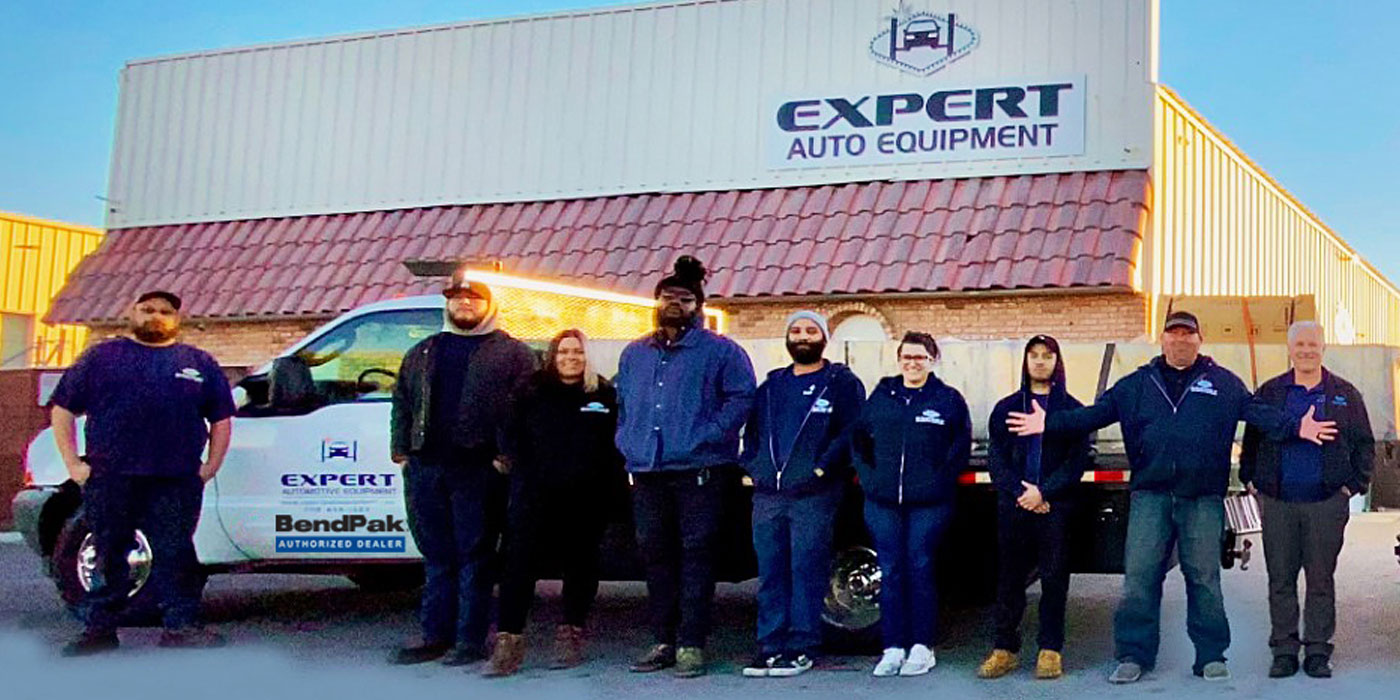You’ve seen them on the street, in magazines, on television and in the cinema: hot cars with hot exhaust systems roaring down the street, letting everybody know they mean business. Movies like The Fast & The Furious have helped popularize performance to a new generation of automotive enthusiast.
Everybody wants the hot street image, and that means adding a coffee-can-sized exhaust system, alloy wheels, low-profile tires, drilled and vented brake rotors, handling package, wings, spoilers and graphics.
Aftermarket performance exhaust products are doing well because there are bolt-on items many DIYers can install themselves. But there are also many performance shops that are doing this kind of work for their customers.
Though performance exhaust products are estimated to be only about 12 to 15 percent of the total exhaust replacement market, its a segment thats been showing outstanding growth in recent years. Performance mufflers, pipes and other exhaust accessories are moving off store shelves in record numbers today because they are satisfying a broad-based need for speed.
Who’s buying these products? "Tuners" who drive "suped-up" Hondas and other small cars, owners of latter-day muscle cars and trucks, and the "old-timers" who are spending tons of money on classic muscle cars and street rods all across America. Cruise nights and car shows are also driving a growing interest in street performance, which is also good for sales.
NO WAITING
With stock exhaust components, theres no sale made until the original system rusts out. With the widespread use of stainless steel exhaust systems in many vehicles today, that can be a long, long time. The average stainless steel system lasts seven to 10 years, which means a vehicle might only get one replacement exhaust system during its lifetime.
Its an entirely different story with performance exhaust products. Many buyers will replace brand new stock exhaust parts with aftermarket parts just to get a gain in performance. Theyre not waiting for the original parts to rust out. Theyre replacing the original stock parts now because they want a performance exhaust system now.
The kind of parts were talking about include low-restriction mufflers and converters, free-flowing pipes, exhaust headers, performance exhaust tips and complete systems.
UPGRADE OPPORTUNITIES
There are two distinct markets for performance exhaust upgrades. One is the youth market. These tend to be younger males who drive tricked-out Honda Civics, Acuras, Mitsubishi Eclipses, etc. Japanese cars are the most popular models, but others include Chevy Cavalier, Ford Focus, Volkswagen and even Hyundai.
The types of exhaust accessories the owners of these vehicles typically add include a big tailpipe, a loud free-flow muffler and maybe a set of mandrel bent low-restriction exhaust pipes. Younger buyers all seem to want the big "sewer pipe" tailpipe extensions, lots of noise and flash.
Polished stainless steel mufflers, tailpipe extensions and cat-back or complete exhaust systems are the ultimate upgrade for this type of customer. But stainless isnt cheap. A stainless muffler can retail for $200 to $300 or more, and a complete system can easily cost $500 to $800 or more plus installation depending on the make and model of the vehicle.
If price is an issue, a "universal-fit" style performance muffler in coated steel or aluminized steel rather than stainless may be a more affordable upgrade.
The other market, and the one which is potentially the most profitable for professional installers, is the older, more affluent import owner. People in this market segment tend to drive expensive European cars like BMWs, Audis, Mercedes and Porsches, or luxury Japanese cars, SUVs or light trucks. These people are also the type who want exhaust components professionally installed. Theyre not DIYers.
Many times, people in this market will buy a brand new vehicle and have the stock exhaust system replaced with an aftermarket stainless steel performance system. They do this for a variety of reasons. Owners of some SUVs and trucks want more power for towing or off-roading. Others want added performance for everyday driving. Some just want to be different or unique from what everybody else drives.
The affluent import owner typically wants performance and durability without sacrificing noise control. They want a powerful sounding exhaust tone, but not one that roars like a buzz saw.
The type of performance upgrades you recommend, therefore, depends on who your customers are and what they want. Steering them in the right direction and recommending products that best suit their needs can not only make your exhaust sales more profitable but give them a more satisfying driving experience at the same time.
SELLING UP
Anytime a muffler or pipe rusts out, it creates a need for a repair and an opportunity to sell up. An exhaust customers immediate concern is usually to get the parts they need to fix their vehicle. They may not have thought of upgrading exhaust performance when they walk into your store. So if you take the time to make them aware of the upgrade options, you might succeed in selling them a performance muffler or an entire cat-back system.
If a customer is interested in upgrading to a performance muffler and/or a complete exhaust system, encourage the customer to buy the highest quality system he or she can afford. In most cases, that means stainless steel.
Of course, not every customer will have an interest in upgrading exhaust performance. Many will just want the cheapest replacement muffler or pipes. Thats okay, because some aftermarket universal-fit performance mufflers and glass packs are less expensive than stock replacement mufflers, and they reduce backpressure too.
CHANGING TECHNOLOGY
Exhaust technology is constantly evolving, and theres a huge array of products you can recommend. Recent developments include new muffler designs that significantly reduce backpressure without sacrificing sound control. Most feature some type of unique baffle design with fiberglass or stainless steel wool packing inside the muffler shell to absorb and dampen noise. Some aftermarket exhaust suppliers are also starting to offer performance mufflers and pipes made of ultra-light titanium, which is 41 percent lighter than steel and just as durable.
Most bolt-on cat-back exhaust systems are aluminized or stainless steel rather than plain carbon steel to increase corrosion resistance. Pipes are mandrel bent to improve gas flow. Installation is no different than a stock system and usually requires no welding, fabrication or other modifications.
HOT MUFFLERS
Performance mufflers typically have a straight-through perforated tube wrapped with fiberglass, ceramic or stainless steel packing material to absorb sound. Or, they use a "turbo" design that routes the exhaust in a loop or S-shaped path to reduce noise. Others feature a unique arrangement of baffles and plates within the muffler shell, or use a hybrid design that combines sound-absorbing packing with a classic turbo-flow pattern.
More recently, the science of acoustics and gas-flow dynamics has yielded some new muffler designs that use various sound-reflecting techniques. Such mufflers reduce noise without the use of restrictive baffles or packing material. They use the sound waves themselves to cancel out noise. When two sound waves that are 180 degrees out of phase collide with one another, they cancel each other out. This is accomplished by using special reflective chambers within the muffler itself and a straight pipe with an air gap that allows sound to escape into the reflective chambers and bounce back. By altering the length and diameter of the reflection channels, the muffler can be tuned to dampen out specific sound frequencies resulting in a free-flowing muffler thats quiet too.
The sound that any performance muffler produces is also a key selling point. Some say tuning is more of an art than a science, but actually, its both. By analyzing the sound waves that come out of a muffler, engineers can tune the muffler to eliminate unwanted frequencies. Most people want a deep, powerful sound at full throttle. They dont want to hear high-pitched buzzes or whistles or resonant frequencies that rattle the entire car.
Most premium-quality performance mufflers and pipes today are made of stainless steel (usually aircraft quality T-304) and are formed with mandrel bends (which do not narrow the diameter of the pipe where it curves.) This reduces unwanted restrictions and keeps the exhaust flowing freely. Most premium mufflers and systems are also plasma or TIG welded to maintain the strength and corrosion resistance of the stainless steel. Some manufacturers also use a process called "bulge forming" or "hydroforming" to form steel sheets into molded shapes using extremely high fluid pressure.
Coated steel performance mufflers are also available with painted finished (usually black or a satin finish). There are also aftermarket companies that can apply a heat-resistant metallic/ceramic coating on plain steel pipes, mufflers and exhaust headers to improve durability, appearance and heat retention. Such coatings may add several hundred dollars to the cost of a system, but can also add more power by keeping the velocity of the exhaust up as it travels down the header tubes and enters the collector. Coatings also help keep heat from radiating up through the floor and into the passenger compartment.
HEADERS
For customers who are serious about performance, street-legal headers are another upgrade option. Headers are a bolt-on product that replaces the stock exhaust manifold(s) to improve engine performance. Headers for an import vehicle can range in price from $350 up to $600 or more depending on the application.
There are two basic types. For all-out performance, there are the long-tube, four-into-one headers that merge the individual pipes into a common collector. These come with various flange and collector configurations, as well as pipe diameters and lengths. Installation may require modifying the exhaust hookup to accommodate the longer length of the headers and collector.
The individual tubes in both types of headers provide a boost in power and torque by allowing the exhaust gas pulses to exit more easily from the ports in the cylinder head. The length, diameter and configuration of the pipes are designed to merge the pulses in such a way that one exhaust pulse helps pull the next one along. The scavenging effect created in the collector area of the header reduces backpressure and actually helps the engine breathe more efficiently than it would if there were no pipes at all.
Most aftermarket headers are made of painted, coated or plated mild steel, with stainless being the most expensive. Stainless provides excellent durability but so do many of the high-tech metallic/ceramic coatings that are available today. In fact, a coating can actually enhance a headers performance by forming a thermal barrier that keeps more heat inside the pipes. Heat increases the velocity of the exhaust gases moving through the pipes for improved low-end torque and throttle response. It also helps reduce cold-start emissions by helping the catalytic converter reach operating temperature faster. A ceramic metallic coating can add an extra $200 to the price of the headers.
Most vehicles that are 1968 or newer require emission hookups to be street legal. So make sure the headers you install meet these requirements. On older carbureted engines and those with throttle-body injection, this includes a stove for the heated intake ductwork, the EGR hookup and air pump plumbing connections. On 1981 and newer vehicles with computerized engine controls and oxygen sensors, the headers must have provisions for an oxygen sensor.










